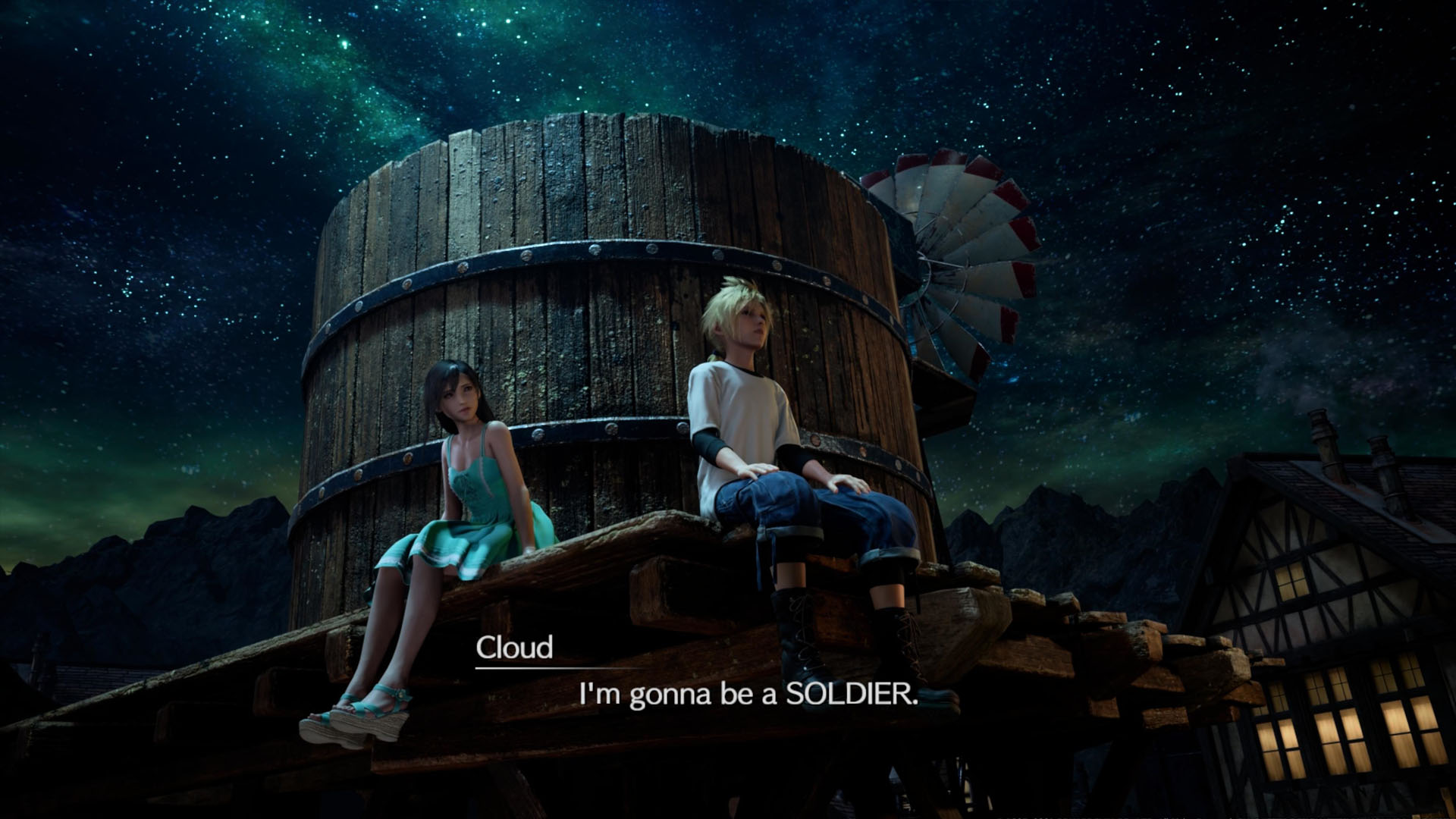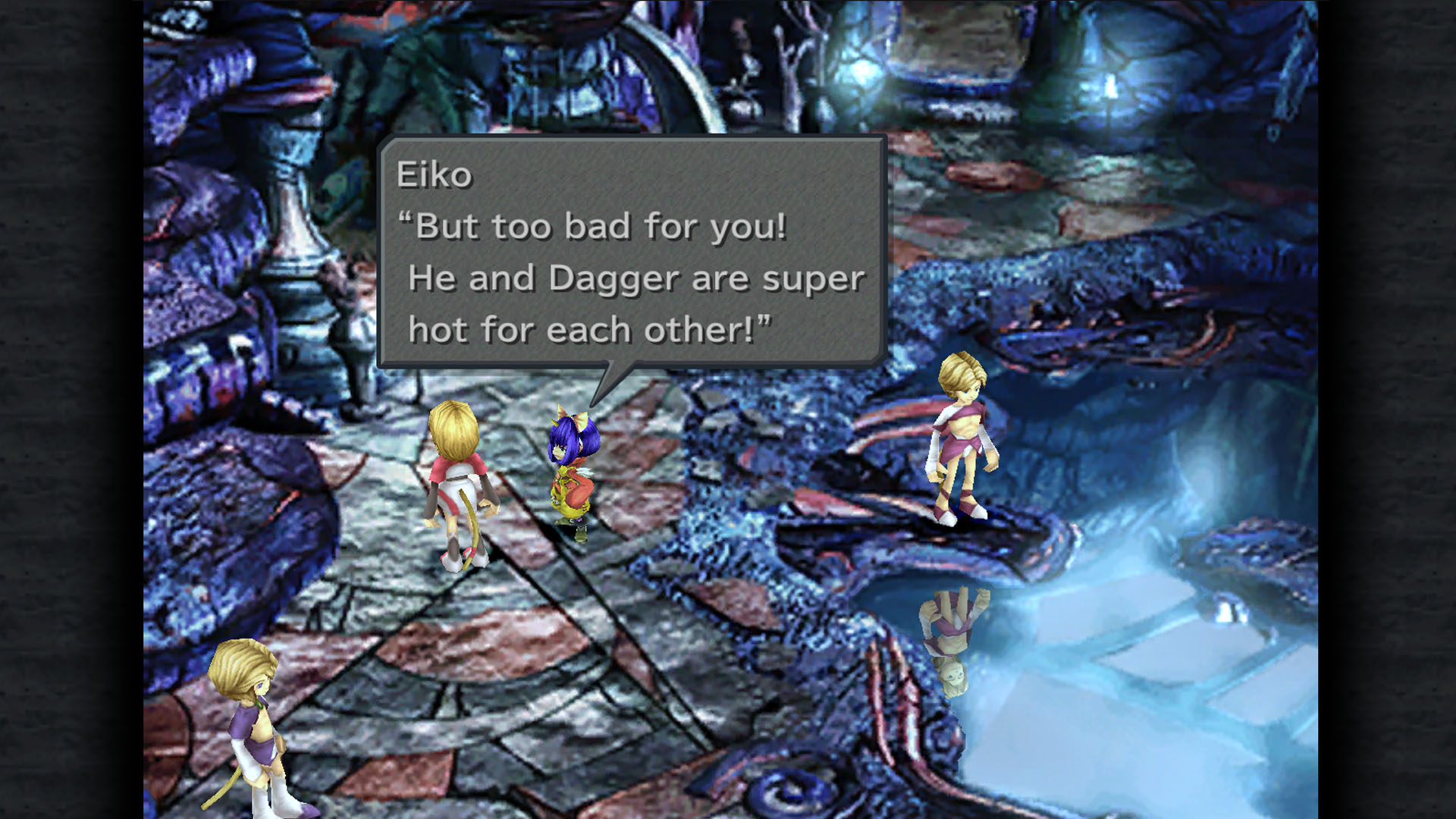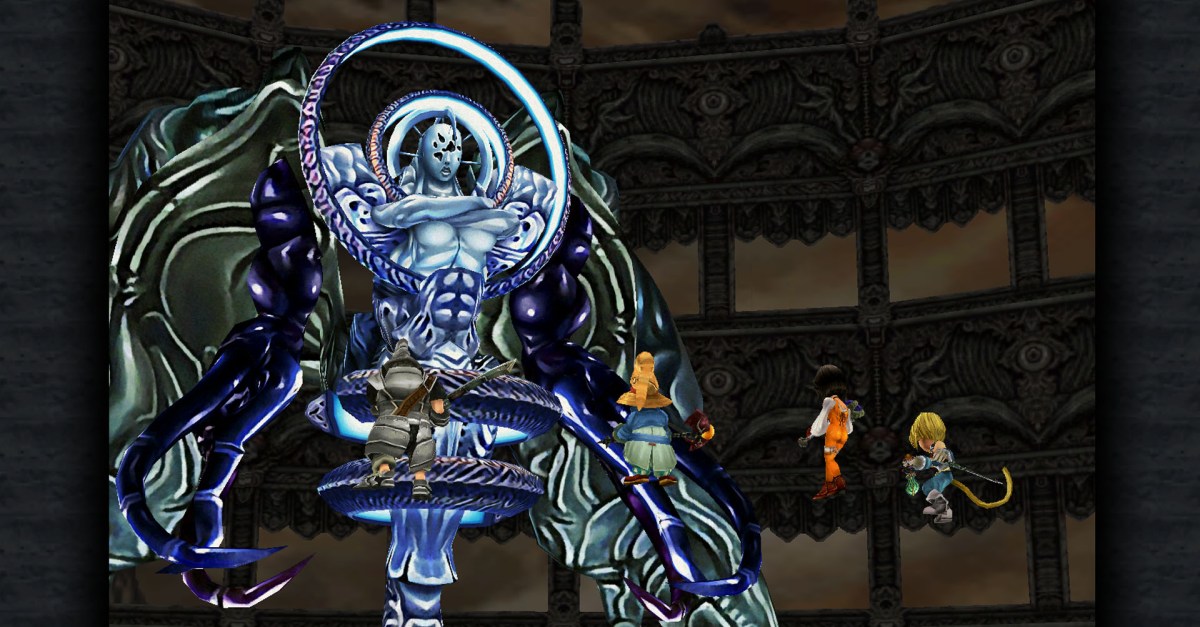Long series are not common in the gaming landscape, thanks to a wide range of factors. Franchises that stand the test of time face the challenge of keeping new iterations relevant to modern audiences while staying true to what the games mean. The Final Fantasy series, which began 43 years ago and is still running, is moved by the force of the classic titles that originated the series, but also due to never settling down to the obvious. Celebrating its 25th anniversary this year, Final Fantasy 9 crystallized the series’ identity by making a point that a Final Fantasy game is made out of the desire to tell a good story and the courage to tell an authentic and fresh one.
Final Fantasy 9 starts with a familiar feeling, a kind of fantasy tale you might have heard once or twice. The kingdom of Alexandria is in celebration. On this auspicious day, fate puts a princess, Garnet, who’s trying to escape from her castle, on the path of thief Zidane, who was sent to the castle to kidnap her disguised as a member of the Tantalus Theatre Troupe. Steiner, an uptight knight, wants to desperately save the princess from being taken away from the safety of her home — which is exactly what she wants. Ignorant of these events, another character, a little boy wearing a pointy hat, Vivi, runs from guards who found him watching the shows in the castle without a ticket. The paths of all these characters converge on the main stage where Queen Brahne and the guests are waiting to watch a play. The commotion blends with the festival, making it all look like part of the show.
Image: Square Enix via Polygon
The goofiness of the starting segment of Final Fantasy 9 establishes the light tone the whole game will have, to some extent. However, the adventure of this group of iconic figures slowly unfolds into an intricate plot involving political conspiracies, militarization of nations, aeon-old civilizations hidden in plain sight, and a face-off with the materialization of “the darkness of eternity”. As I progressed through the four CDs of Final Fantasy 9, it was impossible not to feel awe at how the story grew more grandiose with each act.

Image: Square Enix via Polygon
Facing the imminent end of the world after experiencing a great journey with charismatic characters (maybe not all of them, right, Squall?) was something Final Fantasy games were already doing. Nevertheless, because the two previous games, Final Fantasy 7 and 8, strongly shifted away from the traditional narrative of medieval-esque fantasy that originally defined the series in favor of a sci-fi inspired setting, it felt like such distancing meant progression — as if sci-fi settings or realistic models were the natural step forward that afforded more serious and dramatic storytelling. Leaning toward cute character models and a simple fantasy setting gave many players the impression that Final Fantasy 9 was a childish game.
The success of Final Fantasy 7 could have justified making the next games in the series around the same concept, themes, or aesthetic. In Final Fantasy Ultimania Archive Volume 2, there’s a short passage where Toshiyuki Itahana, who worked on character design, background production, and minigame design in Final Fantasy 9, tells that event designer Kazuhiko Aoki — known for being the producer who put together the stellar team behind Chrono Trigger — said to his team that “there is a magic in Final Fantasy that stays with you to the very end.”
Would Square be able to capture this magic if it kept following the same recipe of Final Fantasy 7? Actually, doing so would go against the ideals behind these games. Hironobu Sakaguchi, creator of the Final Fantasy games, said in an interview with Eurogamer that, in his opinion, making a game for the series involves using “cutting-edge technology” and “having a very strong story as a backbone,” but also the “desire to challenge the status quo.”

Image: Square Enix via Polygon
Final Fantasy 9, by being responsible for returning to the series’ roots, made its mission to show the soul of the series. It did so not only by using crystals and castles to tell a story, though. Final Fantasy 9 looked for technological improvement, presenting a step up to visuals compared to previous games with beautiful cutscenes. Square used the PlayStation hardware potential and came up with the Active Time Event (ATE) system, a new tool to enrich the narrative, which gave us a peek at what other characters are doing while the main events are taking place. But on top of all of that, Final Fantasy 9 gathered the courage to go against expectations.
Final Fantasy 9 marks the series’ history by cementing that what makes a Final Fantasy game is a great story, and that the developers behind them are capable of creating such memorable experiences regardless of how they choose to do it. Like artists who mastered their craft after having pushed their limits by moving out of their comfort zone, Square returned the series to its origins in Final Fantasy 9 with the confidence of knowing what it is, a clear vision that opened the path to all the new ideas and worlds we came to know in the following games.
